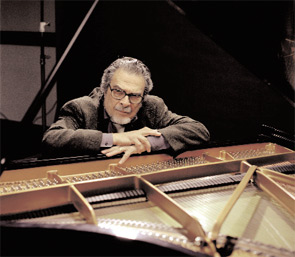
Leon Fleisher is one of the great pianists of our generation, but 30 years ago—at the height of his career—he was struck by a baffling illness that afflicted his right hand and drastically impeded his playing career. According to Fleisher’s biography, the fingers of his hand weakened and became painful and numb, and they would curl uncontrollably. Exercise was of no avail and, indeed, seemed to worsen the condition. Fleisher sought the help of the best experts. Despite numerous workups, doctors could not make a diagnosis with confidence, meaning the treatments that Fleisher tried were—at best—empiric and—at worst—desperate, including dousing the hand with a bottle of whiskey.
A rheumatologist may have been one of the physicians who saw Fleisher, and I suspect that he would have diagnosed a repetitive strain injury or carpal tunnel syndrome. Had I been consulted, I might have added reflex sympathetic dystrophy (RSD) or complex regional pain syndrome type 1. RSD is one of those baffling conditions that rheumatologists see.
Certainly from my own experience, I am never sure that I am correct when I make that diagnosis. I think that when all of the signs and symptoms of RSD are present (the pain, the autonomic dysfunction, the washout of the bones by X-ray) I can be in the ballpark. Even a first-year medical student can make the diagnosis when a claw deformity is present. But in the early stage of the condition or the less classical cases, I usually feel in terra incognito when I put down RSD as a diagnosis.
I often fear that we are telling our patients that, in life, they are losers. Is there gain from arthritis or is there only loss?
Turn Losses to Gains
Without a diagnosis and with no improvement, Fleisher had to change his life. Fortunately for him, there is a repertoire of pieces for the left hand that allowed him to perform despite an otherwise great impairment. Fleisher’s condition was ultimately diagnosed as focal dystonia and, with a variety of treatments, he regained the use of his right hand and has continued performing. He is now almost 80.
While a rheumatologist or any other physician may be stymied by diagnosing and treating a condition like Fleisher’s, we nevertheless have a large armamentarium of measures that could define his disability using metrics that range from the SF-36 to my favorite, the Health Assessment Questionnaire (HAQ). The HAQ is a catalog of woe and provides a remarkably accurate assessment of loss through questions that probe the functioning of the upper and lower extremities.
If a physician or other provider wants to know what a patient has lost (i.e., cannot do), the HAQ is terrific. Consider its construction and the manner in which points are awarded to the extent of limitation. For any given activity (e.g., opening a jar), full function gets a zero while full dysfunction gets 3 points. The best a person can do in life is a zero. The worst is 3. While I would have preferred a scaling system that gives function a positive number and dysfunction a negative one, the HAQ is enormously valuable and is one of bedrocks of modern rheumatology research.
While I occasionally do a HAQ in my clinic, usually I ask the patient a more direct question about function, especially if I am with a trainee: “What are things that you would like to do but cannot do because of your arthritis?” The array of answers is remarkable for its variety (and sadness) and, hopefully, impresses on the trainee the seriousness of arthritis and the need for better treatment. After 30 years of caring for arthritis patients, I am well aware of the monumental loss this disease causes.

The Goal: Less Loss
There are many reasons for providers and investigators to focus on loss and demonstrate its magnitude in quantitative ways. For the individual patient, a measure like the HAQ is an important way to characterize health status and measure outcomes. A change in the HAQ is often as good an indicator as a change in the joint count or sedimentation rate.
In a larger realm of health policy, a quantitative measure of loss provides a basis for advocating for patients to get more and better care and a greater share of the healthcare dollar. The greater the loss caused by a given type of illness, the greater the allocation of resources—whether by the NIH for research or the insurers for the provision of services. Certainly, the pharmaceutical industry is attuned to the burden of illness—as reflected in quality-adjusted life-years (QALYs)—and it is likely to invest in diseases where the unmet needs are high.
Whether the patient fills in a questionnaire like the HAQ or answers an open-ended question about function, the message is clear: Arthritis is about loss. Fortunately, medical therapy for inflammatory arthritis and improved surgical procedures are producing dramatic improvement in patient outcome, but the benchmark of success is really less loss, with gain only moving the HAQ back to zero.
We should all be thankful for these improvements in patient care, but this perspective can be narrow as it relates to how patients view the world and how we view our patients. I often fear that we are telling our patients that, in life, they are losers. Is there gain from arthritis or is there only loss? I will answer this question in a future column when I describe the Leon Fleisher concert I attended.
Dr. Pisetsky is physician editor of The Rheumatologist and professor of medicine and immunology at Duke University Medical Center in Durham, N.C.
